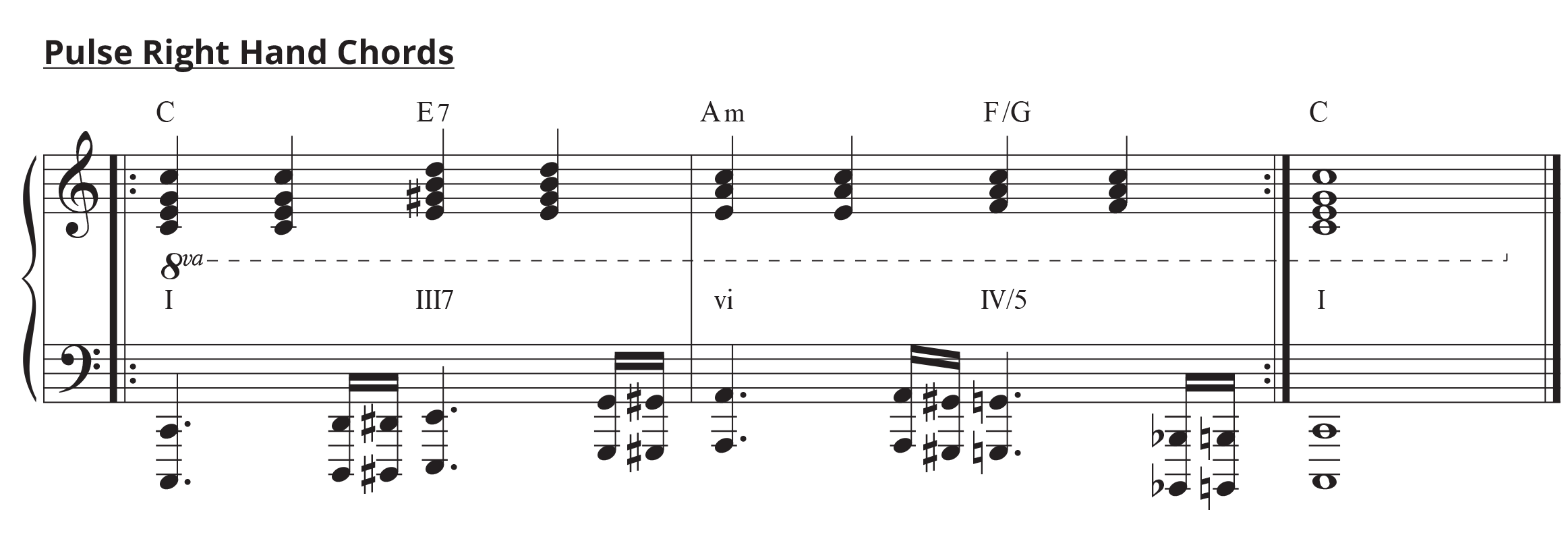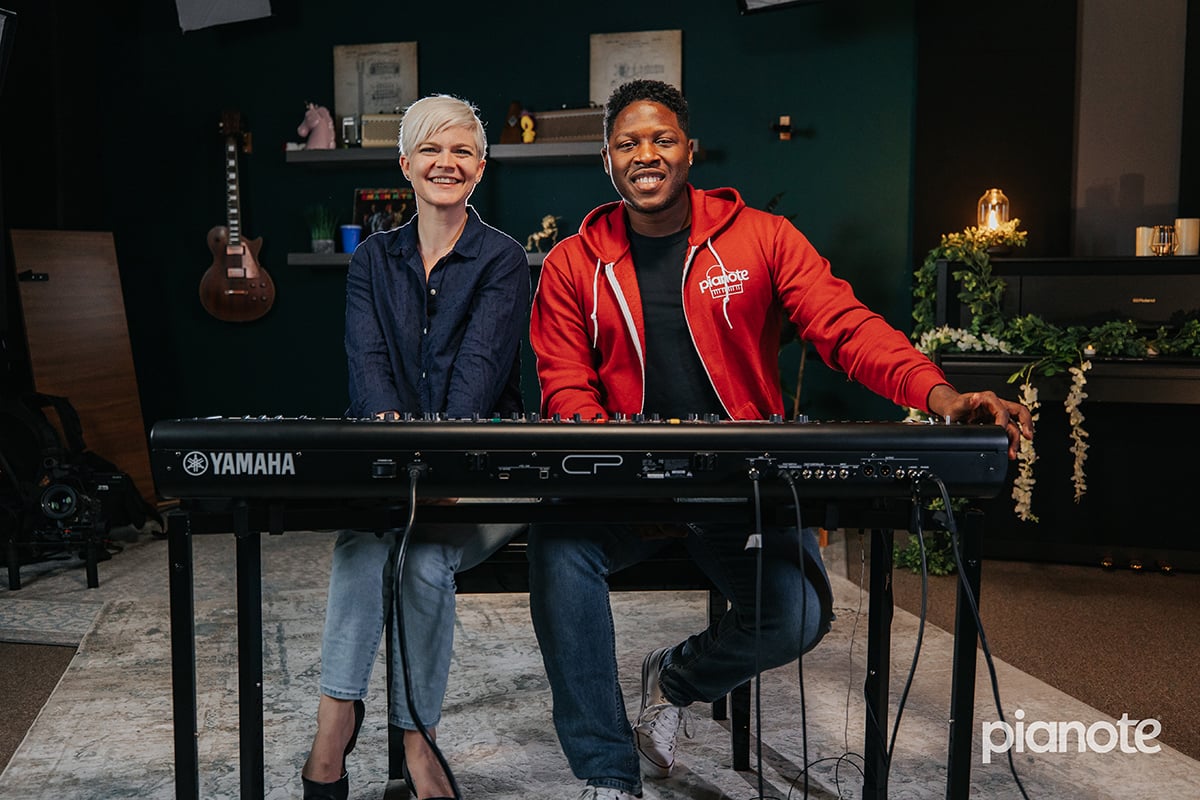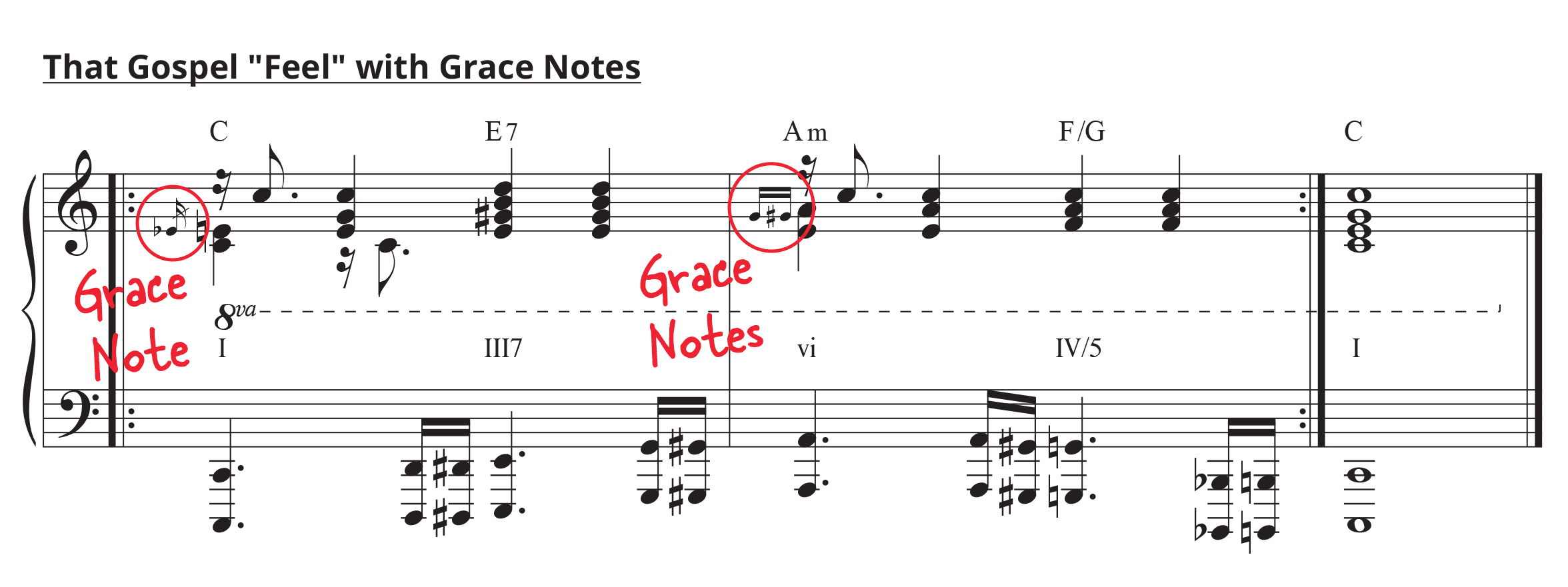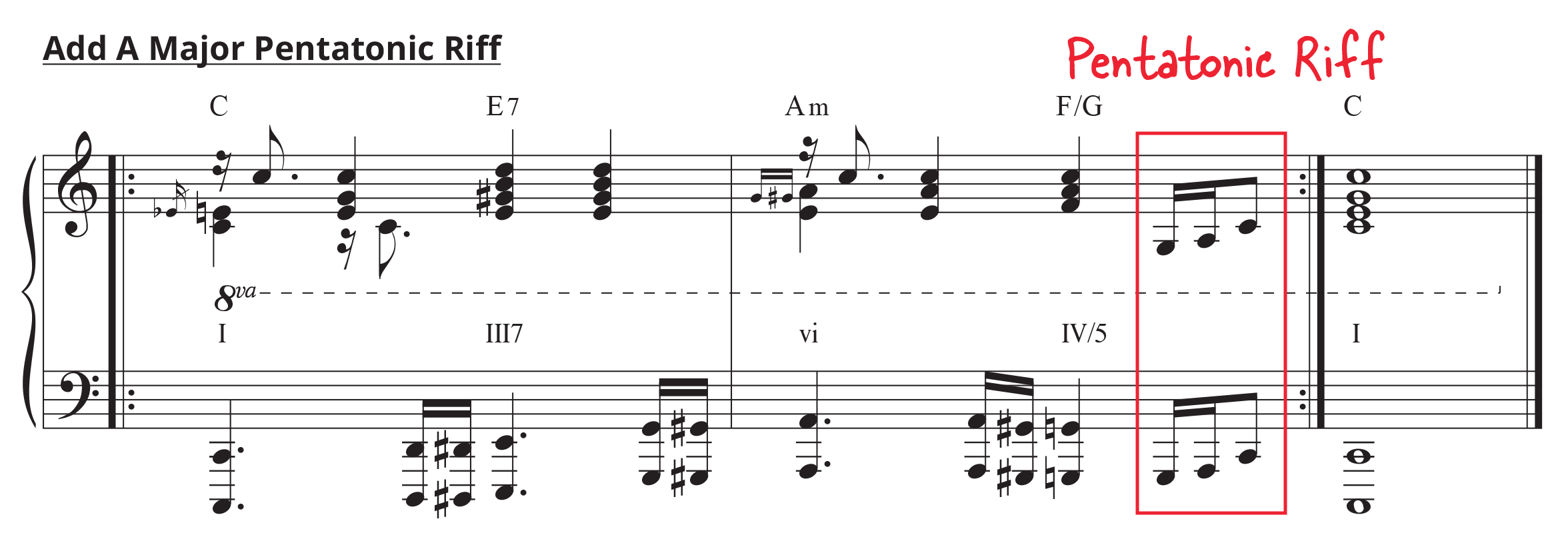Gospel piano is a beautiful genre of music. The gospel sound is unmistakable, and for many musicians, it’s an incredibly rewarding genre to learn because it enables you to give back to your spiritual community.
Erskine Hawkins has played with world-class musicians like Eminem, Rihanna, and Zendaya. But his favorite thing to play is gospel music! In this lesson, Erskine will show you how to take a simple chord progression and transform it into gospel goodness.
Table of Contents:
> Make sure you download the free lesson resource pack
Get free lessons, tips, exclusive interviews, music news, and more delivered to your inbox every week. Unsubscribe anytime.
Let’s start with a simple chord progression:

Get to know this progression well and practice it a few times.
The chords we’ve chosen already hint towards a gospel sound. For example, we play a dominant 7th chord (E7) instead of a normal E Major chord (E). This gives the progression an extra jazzy sound.
We’ll also use a slash chord (F/G). Another name for this chord is the IV/5 “sus.” In C Major, it can be notated as G9sus4 because it contains G (the root), F (the 7th), A (the 9th), and C (suspended 4th from D).
A simple way to make any chord progression more interesting is to put interesting stuff between the chords.
Erskine adds some meat to the bass by playing chromatic octaves with his left hand. All he’s doing here is approaching each bass note by starting two half-steps away. It’s deceptively simple, but the effect is huge!

To add an even bigger sense of movement to your progression, try pulsing your right hand chords as quarter notes, too.


Access Erskine’s full gospel piano course by joining Pianote! Erskine’s course includes exercises, eleven video lessons, and real song examples.
That chromatic sound is essential to gospel music, and another way to add more of it to your progression is with grace note slides. Use neighboring black notes to slide into your target white notes, or vice versa. You can also play two chromatic grace notes to your target note too. This works well for the thirds in your chords.

As a final gospel flair, Erskine ends the progression with short, pentatonic riff in both hands to approach the final chord:

A major pentatonic scale consists of the notes 1, 2, 3, 5 and 6. So, to find a pentatonic riff that works with your chord progression, find your progression’s key signature and then the key’s pentatonic scale degrees. Then, play around with those notes and see what you come up with!
Don’t be too polished! Gospel music isn’t meant to be an exact science. Your hands don’t have to land together precisely. Instead, play freely and organically. Case in point: Erskine likes to play with a “trashcanny” feel.
We hope you enjoyed this lesson! You can learn more gospel piano (for free!) here:
Charmaine Li is a Vancouver writer who has played piano for over 20 years. She holds an Associate diploma (ARCT) from the Royal Conservatory of Music and loves writing about the ways in which music—and music learning—affects the human experience. Charmaine manages The Note. Learn more about Charmaine here.
/marketing/pianote/promos/april/banner-bg-m.webp)
We use cookies for traffic data and advertising. Cookie Policy »
/marketing/pianote/promos/april/banner-title.webp)